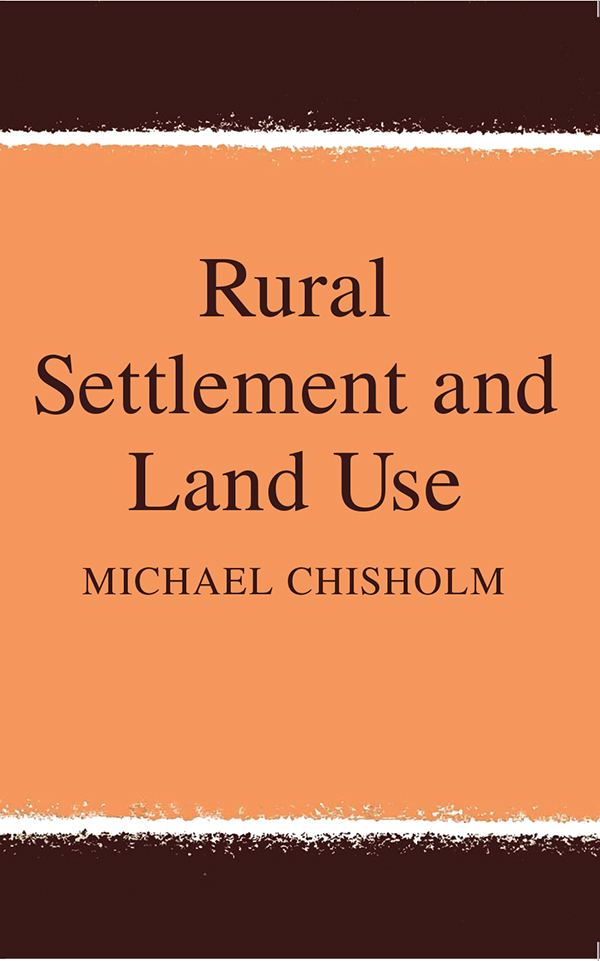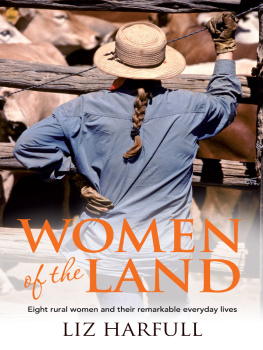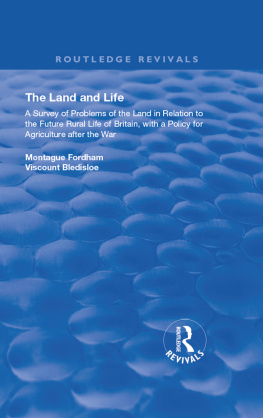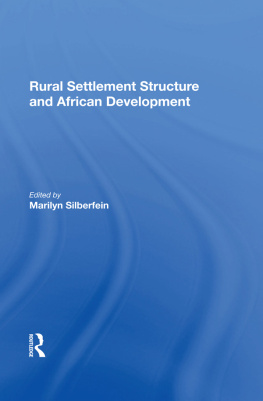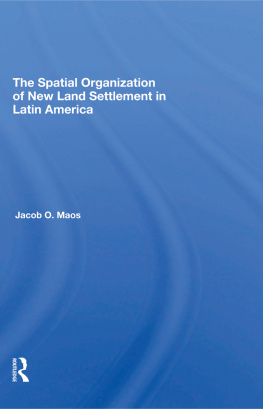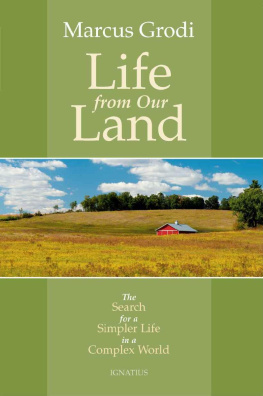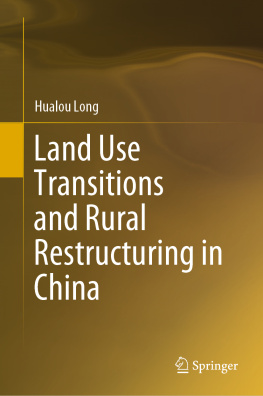First published 1962 by Transaction Publishers
Published 2017 by Routledge
2 Park Square, Milton Park, Abingdon, Oxon OX14 4RN
711 Third Avenue, New York, NY 10017, USA
Routledge is an imprint of the Taylor & Francis Group, an informa business
Copyright 1962 by Michael Chisholm
All rights reserved. No part of this book may be reprinted or reproduced or utilised in any form or by any electronic, mechanical, or other means, now known or hereafter invented, including photocopying and recording, or in any information storage or retrieval system, without permission in writing from the publishers.
Notice:
Product or corporate names may be trademarks or registered trademarks, and are used only for identification and explanation without intent to infringe.
Library of Congress Catalog Number: 2006048004
Chisholm, Michael, 1931-
Rural settlement and land use / Michael Chisholm.
p. cm.
Originally published: Chicago: Aldine Pub. 1st U.S. ed. 1970
Includes bibliographical references and index.
ISBN 978-0-202-30914-9
1. FarmsLocation. 2. Villages. I. Title.
HD111.C47 2007
333.76dc22
2006048004
ISBN 13: 978-0-202-30914-9 (pbk)
Contents
FIGURES
TABLES
Preface
To a remarkable extent, students of location problems have fastened attention upon industrial and urban matters rather than upon agricultural and rural affairs. The preponderance of the former studies undoubtedly reflects the relative importance of the manufacturing and commercial sectors of the technically more advanced countries where most students of location matters have in the past resided. Perhaps it has also seemed that the locational problems posed by city life and factory employment are more amenable than those of the countryside to rigorous analysis. It is hoped that this book will go some way toward filling the gap. The account which follows does not purport to cover all aspects of, and factors affecting, rural settlement and land-use patterns of location: it is an essay in the logical development of a closely related set of ideas. From the analysis it is evident that certain themes recur at all scales of consideration and under very diverse conditions of the physical environment and of economic development. An attempt is made to examine some of the practical conclusions which emerge from the argument.
I wish to acknowledge the debt I owe to those at Cambridge who taught me, in particular Mr A. A. L. Caesar. I also owe much to my former colleagues at the Institute for Research in Agricultural Economics, Oxford, and especially the Director, Mr C. G. Clark, for much help and stimulation. To Professor W. G. East, joint-Editor of this series, I am grateful for many helpful comments and suggestions; to Mr K. A. Sinnhuber, Ph.D., particularly for help with ; Mr M, J. Webb and Mr G. Manners for discussion, comment and criticism; and Miss P. M. Payne for assistance with the illustrations. But mine alone is the responsibility for any sins of omission or of commission.
Michael Chisholm
1
Introduction
O f recent years there has been a growing awareness of, and interest in, the problems presented by distances between places on the surface of the earth. Much of this interest has been stimulated by the issues involved in planning a reasonable distribution of employment opportunities in the different parts of this and other countries; more recently, there has been a spectacular expansion of interest in economic growth and the problem of getting the under-developed countries to the point of take-off into sustained growth. Such matters involve the relative advantages of locations, both in connection with their natural resources and their position relative to other parts of the world. Sociologists and town planners and others have become acutely aware of the social difficulties which arise from a long daily journey to work due to the separation of dwellings and workplaces. One of the objectives in planning is to reduce the amount of circulation necessary for the conduct of the normal business of living. Geographers have for long claimed an interest in the differences which exist between places and there is an increasing awareness among them that many observable variations of phenomena in space are attributable to relative locations rather than to the intrinsic qualities of the individual places. In many other fields of study and endeavour, such as economics and the organization of retail trade, the problems associated with distance and circulation are receiving increased attention; witness of this is given by studies of the influence of distance upon international trading patterns and the care taken in locating the large peri-urban shopping centres which are being built in the United States.
Distance, then, is the central theme around which this book is written, in an attempt to provide a systematic account of certain features of rural settlement and land use. By developing a systematic study, it has been possible to draw upon a wide range of seemingly unrelated materials to show how these have certain elements in common. In doing this, no claim is made to have elaborated a general theory of universal validity, because the problem of distance is only one among many factors affecting location patterns. However, it is a factor which has its influence everywhere in the world in all location matters, even if at times it is of negligible importance. To obtain a complete understanding of a location problem, the nature of the effects of distance must be appreciated. Though in some cases it may not be very important, it usually has a considerable influence and is often the dominating consideration.
The genesis of this book throws light on another aim which I had in mind when writing. For several years I was responsible for teaching Land Economics for a Diploma in Agricultural Economics and this presented an interesting problem in the choice of material and approach. Many of the persons taking the Diploma came from abroad, the majority subsequently becoming engaged in various forms of administrative or advisory or research work in connection with agriculture under very diverse conditions. It was clear that an exposition of the economics of land use had to be couched in terms of principles with a universal application, backed with suitable examples, such that the students would subsequently be able to apply the concepts to their own particular problems. There was also the necessity of presenting the ideas in a manner which would enable their relevance to day-to-day problems to be seen readily; abstract theory would be a waste of time. I was further led to the conclusion that the central problems in the economics of land use can be stated quite simply as problems of location, of the competition between alternative users and uses to command each particular site.
This train of thought led to the issue of how best, in a limited amount of time, to introduce ideas on location to those unfamiliar with such studies. I chose to use a common situation which has an evident bearing on agricultural problems over the greater part of the globe: a particular farmer operates a holding which instead of being included within a single boundary is split up into several fragments which lie at various distances from the dwelling. On the one hand, there are all the problems arising from the general loss of time, cost of fencing and inability to use machinery properly. On the other, there is the effect of distance upon the way in which each plot of land is used. It is easy to show why it is rational to arrange the type of farming on each plot so that on the furthest ones the amount of labour which has to be bestowed is the least, with a consequential ordering of the crops and methods of cultivation in relation to distance from the farmstead.

